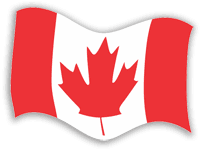 #7 The Constitution Act, 1982
#7 The Constitution Act, 1982
by Norman Hillmer
| In April 1982, in a public ceremony on Parliament Hill in
Ottawa, Queen Elizabeth II and Prime Minister Pierre Trudeau
signed the Constitution Act, marking the end of a process that
was so unusual that a word had to be invented to describe it.
The Canadian constitution had been “patriated” — brought home
from Great Britain. From its beginning, Canada had a constitution, but it did not belong to Canada. The British North America (BNA) Act, an 1867 law of Britain’s Parliament, was Canada’s founding document, yet it could only be changed with the permission of the British Parliament. Trudeau believed passionately that Canada’s long journey from the embrace of the British Empire was incomplete without constitutional independence. However, Canada is a federal state where political authority was shared between the national and provincial governments. Prime ministers and provinces had been trying for more than half a century to find a consensus solution that would make it possible to Canadianize the BNA Act. Trudeau’s own attempts in the 1970s had been unsuccessful. After 1980, Trudeau was determined to patriate the constitution, no matter what. He invited the provincial premiers to Ottawa in September 1980, but rapidly concluded that they were demanding far too much in return for their backing. Trudeau warned the premiers that he would ask London to pass the necessary legislation to bring the BNA Act home to Canada without provincial consent, adding to his request a charter defining the inalienable rights and freedoms of every Canadian citizen. “I am telling you now,” Trudeau angrily told the provinces, “we’re going to go it alone. We’ll go to London, and we won’t even bother asking a premier to come with us.” The Supreme Court ruled that Trudeau had the legal right to do this but the court warned that to proceed this way would contradict Canadian history and custom. The British themselves gave hints that they might not be willing to send the constitution to Canada unless they had an assurance that there was strong provincial support for patriation. Trudeau then decided on another federal-provincial conference. In November 1981 he met with provincial leaders in Ottawa, knowing that a coalition of eight of the 10 provinces was against him. The “gang of eight,” as they were called, included René Lévesque, the separatist premier of Quebec and Trudeau’s longtime adversary. Trudeau and Lévesque had clashed in the 1980 Quebec referendum, in which a proposal for Quebec independence was defeated by a large margin. That gave Trudeau another incentive to remodel the constitution, as he had promised he would if his fellow Quebeckers rejected independence. As the participants in the November 1981 constitutional conference bargained, the gang of eight broke apart. Lévesque found himself alone. He woke up on the final morning of the conference unaware that the Canadian government and the other nine provinces had reached an agreement the previous day and night without his knowledge and participation. He left Ottawa feeling outmaneuvered, betrayed and humiliated. The government and legislature of Quebec did not agree to the patriation of the constitution, and they haven’t yet. Two subsequent efforts to renegotiate the constitution with Quebec’s cooperation, the Meech Lake and Charlottetown Accords, ended in failure. The British North America Act of 1867 was the basis of the new constitution that Trudeau signed in April 1982, along with all of the amendments to the BNA Act that had gone through the British Parliament over the years as the country grew and changed. The most important innovations in the 1982 Constitution Act were a series of precise formulas for amending the constitution, Trudeau’s Charter with landmark guarantees of rights and freedoms and enhanced powers for the provinces in the area of natural resources. The Constitution Act is difficult to alter. Most changes require the approval of the Canadian Parliament and seven of the 10 provincial legislatures; the provinces that agree to any amendment must in turn make up at least 50 percent of the overall population of Canada. Amendments having to do with the Queen, the Governor General and fundamental aspects of the structure of the House of Commons, the Supreme Court and the use of the official languages of French and English can only be authorized with the consent of Canada’s Parliament and the legislatures of all 10 provinces. Any one of the 11 parliaments, for example, could kill a proposal to end Canada’s longstanding ties with the monarchy. The patriation of the constitution was Trudeau’s greatest victory. He had succeeded in the constitutional wars where others had failed, and Canada finally had its declaration of independence from Britain. Yet there was bitterness in Quebec at having been left aside. It lingers still. Norman Hillmer is Professor of History and International Affairs at Carleton University. Eugene Forcey’s How Canadians Govern Themselves, available on the Library of Parliament website, is an excellent summary of the Constitution Act, 1982. John English tells the dramatic story of the patriation of the constitution in Just Watch Me: The Life of Pierre Elliott Trudeau 1968-2000 (Toronto: Knopf Canada, 2009). Next Instalment: The Charter The Canadian Experience is a 52-week history series designed to tell the story of our country to all Canadians. Sponsored by Multimedia Nova Corporation and Diversity Media Services/Lingua Ads partners, the series features articles by our country’s foremost historians on a wide range of topics. Past articles and author bios are available at http://www.cdnexperience.ca. The Canadian Experience is copyright © 2010-2011 Multimedia Nova Corporation. |
List of published "Canadian Experience" articles |
The Canadian Experience communicates to
us about the many facets of Canada, the people, the Charter, brings us
reality and creates understanding.
Copyright ©2010 Echoworld Communications. All rights
reserved

